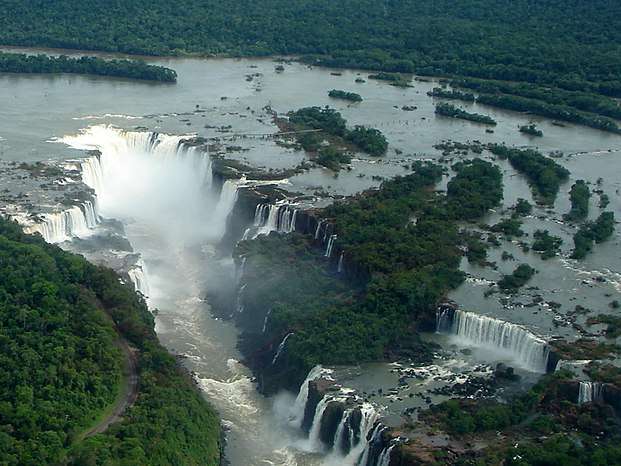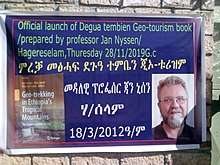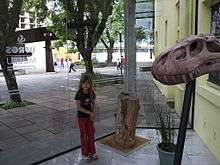Geotourism
Geotourism deals with the natural and built environments.[1]

Geotourism was first defined in England.[2]
Definitions of modern geotourism
Key definitions in the geological sense ((abiotic nature based tourism))include:
- “…part of the tourist’s activity in which they have the geological patrimony as their main attraction. Their objective is to search for the protected patrimony through the conservation of their resources and of the tourist’s Environmental Awareness. For that, the use of the interpretation of the patrimony makes it accessible to the lay public, promoting its popularization and the development of the Earth sciences”.[3]
- “Geotourism is a knowledge -based tourism, an interdisciplinary integration of the tourism industry with conservation and interpretation of abiotic nature attributes, besides considering related cultural issues, within the geosites for the general public”.[1]
- "A form of natural area tourism that specifically focuses on landscape and geology. It promotes tourism to geosites and the conservation of geo-diversity and an understanding of Earth sciences through appreciation and learning. This is achieved through independent visits to geological features, use of geo-trails and view points, guided tours, geo-activities and patronage of geosite visitor centers".[4]
- “The provision of interpretative and service facilities for geosites and geomorphosites and their encompassing topography, together with their associated in-situ and ex-situ artefacts, to constituency-build for their conservation by generating appreciation, learning and research by and for current and future generations”.[2]
Geotourism (abiotic nature based tourism), a new approach
Geotourism adds to ecotourism's principal focus on plants (flora) and animals (fauna) by adding a third dimension of the abiotic environment. Thus it is growing around the world through the growth of geoparks as well as independently in many natural and urban areas where tourism's focus in on the geological environment.
Most of the world defines geotourism as purely the study of geological and geomorphological features.

"Looking at the environment in a simplistic manner, we see that it is made up of Abiotic, Biotic and Cultural(ABC) attributes. Starting with the 'C' or cultural component first, we note that of three features it is this one which is generally the most known and interpreted, that is, through information about the built or cultural environment either in the past (historical accounts) or present (community customs and culture). The 'B' or biotic features of fauna (animals) and flora (plants) has seen a large focus of interpretation and understanding through ecotourism. But it is the first attribute of the 'A' or abiotic features including rocks, landforms and processes that has received the least attention in tourism, and consequently is the least known and understood.This then is the real power of geotourism, in that it puts the tourist spotlight firmly on geology, and brings it to the forefront of our understanding through tourism".[4]
What is a GEOSITE? A geosite is a location that has a particular geological or geomorphological significance. As well as its inherent geological characteristics it may also have cultural or heritage significance.
See also
- Geopark
- Global Geoparks Network
- Geosite
- Sustainable tourism
References
- Sadry, B.N.(2014)"Fundamentals of Geotourism: with special emphasis on Iran", Third Edition.Samt Organization publishers,Tehran.220p.(English Summary available Online at: http://physio-geo.revues.org/4873?file=1
- Hose, T. A. (2012), “ 3G’s for Modern Geotourism ”, Geoheritage Journal, 4: 7-24
- Ruchkys U de A (2007) Patrimônio Geológico e Geoconservação no Quadrilátero Ferrífero, Minas Gerais: potencial para criação de um geoparque da UNESCO. Tese de Doutorado—Instituto de Geociências, Universidade Federal de Minas Gerais, Minas Gerais, Brazil
- Newsome,D. and Dowling, R.K. (2010) Geotourism: The Tourism of Geology and Landscape, Oxford: Goodfellow Publishers
External links
![]()
